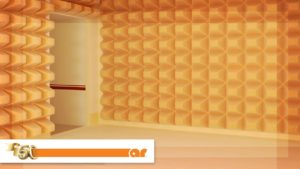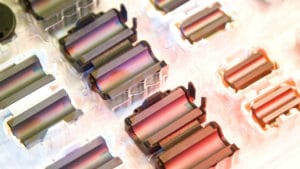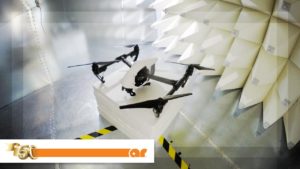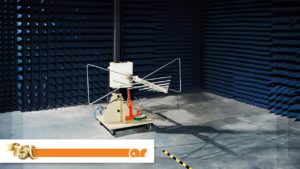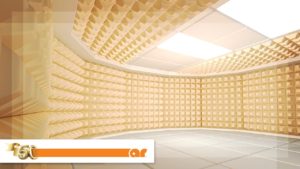This is post 4 of AR’s blog series “Specifying RF/Microwave Power Amplifiers for EMC Testing.” The full series can be viewed here. EMBEDDED AMPLIFIER CONTROL For years, amplifier control has been limited to manual operation and remote control through a communications bus. With ever-changing technology, a third type of amplifier control has emerged. Now, many amplifiers … [Read more...]
Basics of Passive Filters for EMC Compliance
INTRODUCTION One of the roles of the practicing EMC engineer or product designer is to be able to design filters to add to circuits in order to get them to pass various EMC immunity and emissions standards such as IEC 61000-4-2 for ESD immunity, IEC 61000-4-3 for Radiated RF immunity and IEC 61000-4-4 for Electrical Fast Transient/Burst immunity and other various … [Read more...]
Specifying RF/Microwave Power Amplifiers for EMC Testing – HIRF & High Frequency Field Generating Systems
This is post 3 of AR’s blog series “Specifying RF/Microwave Power Amplifiers for EMC Testing.” The full series can be viewed here. SYSTEMS The ability to pull together the right amplifiers for the job, with training and ongoing support is one of many important elements to building a system. This approach allows test engineers and technicians the ability to do what they do … [Read more...]
Cost-Effectively Ensure Electromagnetic Compatibility in the Age of IoT
Wireless/RF is ubiquitous, so implement a pre-compliance regimen with off-the-shelf equipment. Every electronic product has to go through full electromagnetic compatibility (EMC) testing to get the much-coveted stamp of approval from the various regulatory bodies. This has traditionally been a costly undertaking with multiple trips to a distant testing facility, with … [Read more...]
Specifying RF/Microwave Power Amplifiers for EMC Testing – Amplifier Input & Output Requirements
This is post 2 of AR’s blog series “Specifying RF/Microwave Power Amplifiers for EMC Testing.” The full series can be viewed here. INTRODUCTION How much input power is required to achieve full rated output power is a common concern when choosing an amplifier. Amplifier manufacturers have specified an input of 1 milliwatt. (Note that this is not the case for every … [Read more...]
Risk Mitigation: Advanced ESD Instrumentation for Qualification Testing of Static Shielding Bags
Today, Suspect Counterfeit ESD Control and Non-Compliant Packaging is a growing issue throughout the Global Supply Chain. EEE parts (ESD sensitive devices) damage transcends circuit cards, touch screen displays, handheld devices, and other microprocessor driven products. Suspect counterfeit static control or non-compliant electrostatic discharge (ESD) shielding bags can be … [Read more...]
Ten Tips to Minimize EMI from On-Board DC-DC Converters
It is fairly common to find multiple onboard DC-DC converters on today's portable, mobile, and IoT devices. If the device uses wireless, GPS, or cellular technologies, the EMI from these converters (which generally use switching frequencies between 1 and 3 MHz) often interferes with the receiver performance of the wireless modules. The problem really crops up for low-band … [Read more...]
Introduction to Specifying RF/Microwave Power Amplifiers for EMC Testing
Can you imagine a world without electronic devices? AR asks and answers this question in its new blog series: “Specifying RF/Microwave Power Amplifiers for EMC Testing.” Explosive growth in technologies like portable electronics, Internet-of-Things devices, and autonomous vehicles has led to a world full of electromagnetic interference. Efficient EMC testing is more critical … [Read more...]
Review of MIL-STD-461 CS116 Damped Sinusoidal Transients, Cables and Power Leads
Introduction In this article, I am delving into the evolvement of CS116 testing, the background, the purpose and how the testing is approached today. The test title is, “Conducted Susceptibility, Damped Sinusoidal Transients, Cables and Power Leads”. MIL-STD-461 assigns applicability to a broad variety of applications and states the purpose is to verify the ability of the … [Read more...]
Review of MIL-STD-461 RE103 Antenna Spurious and Harmonic Outputs
Introduction Technology frequently embeds transmitters in a myriad of devices to support an Internet Of Things (IoT) concept from identification to condition-based actions, and this IoT approach includes defense operations. Devices may include multiple transmitters that a few years ago did not include communications of any sort. Inclusion of RF transmitters has prompted a … [Read more...]
- « Previous Page
- 1
- …
- 3
- 4
- 5
- 6
- 7
- …
- 16
- Next Page »
